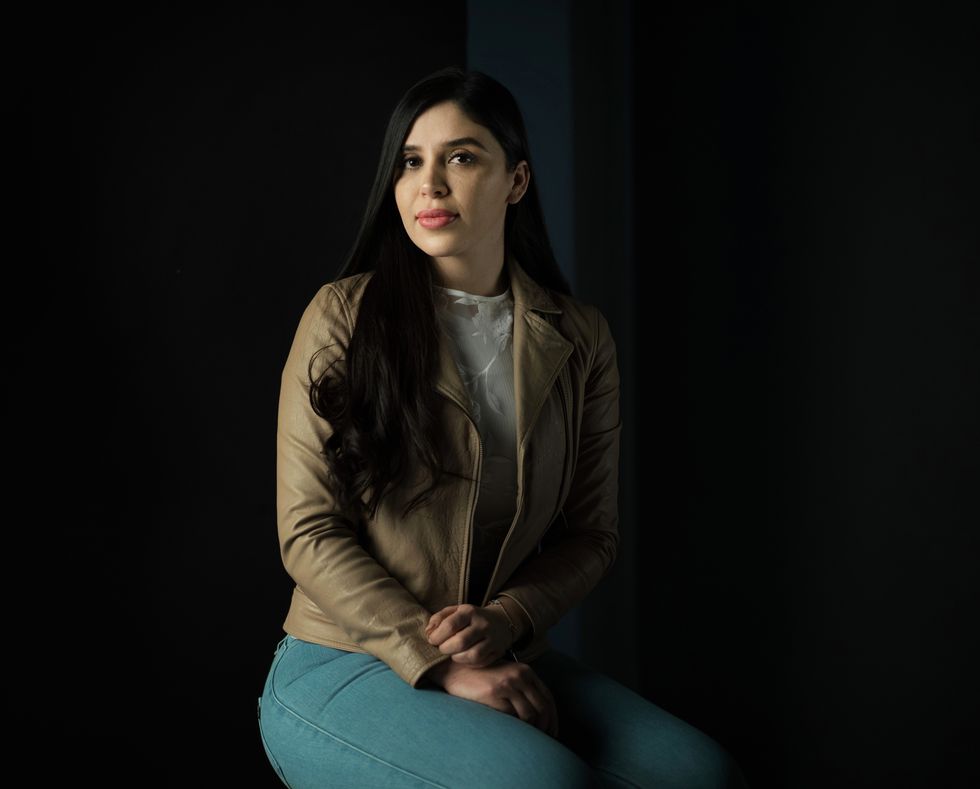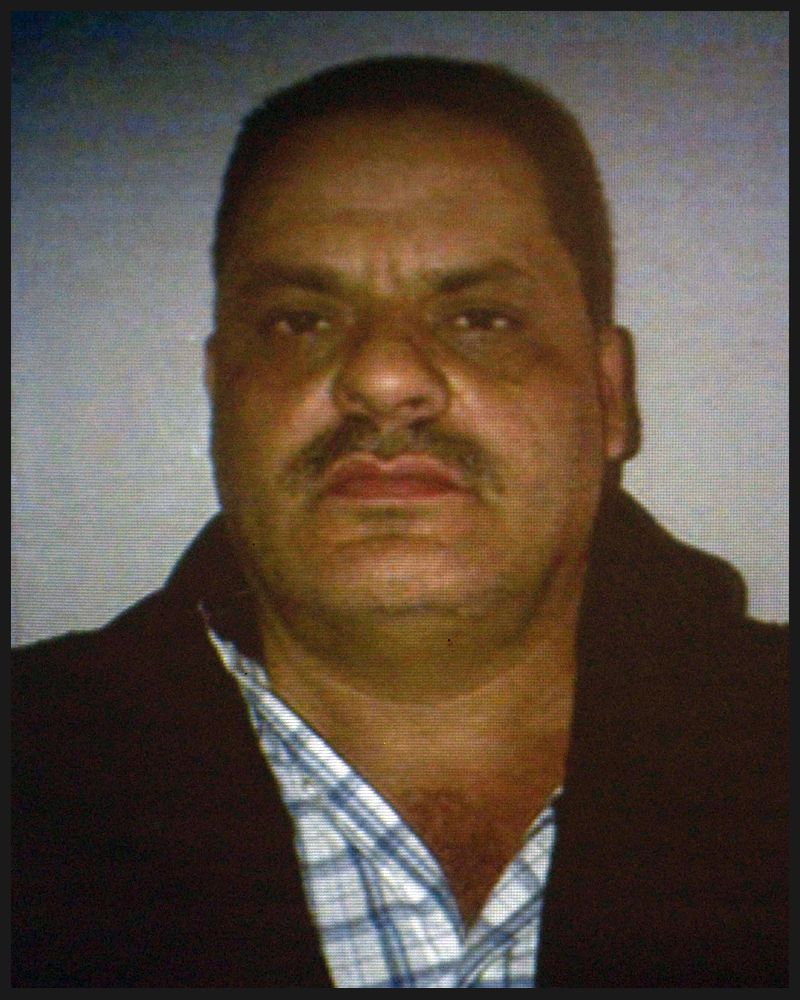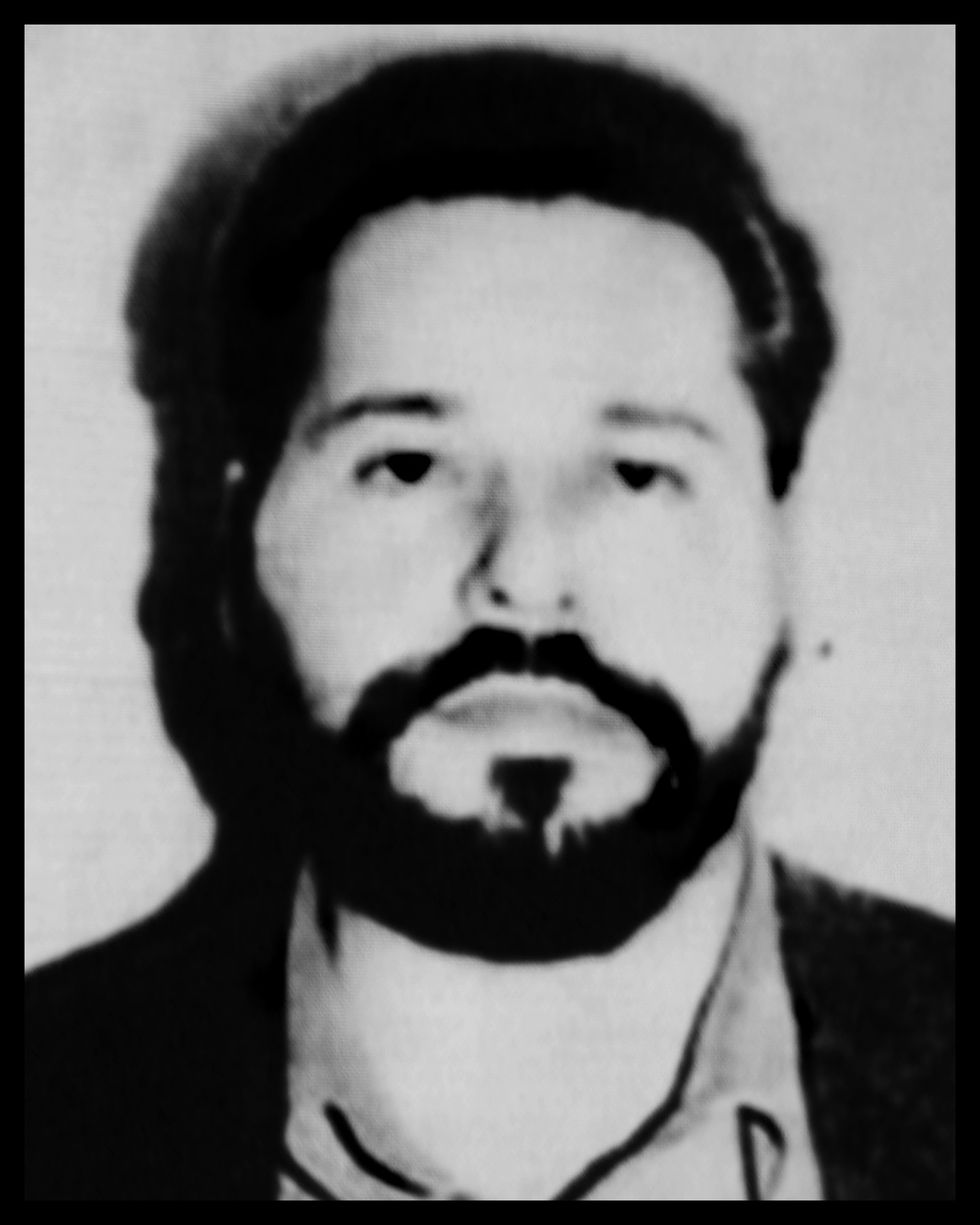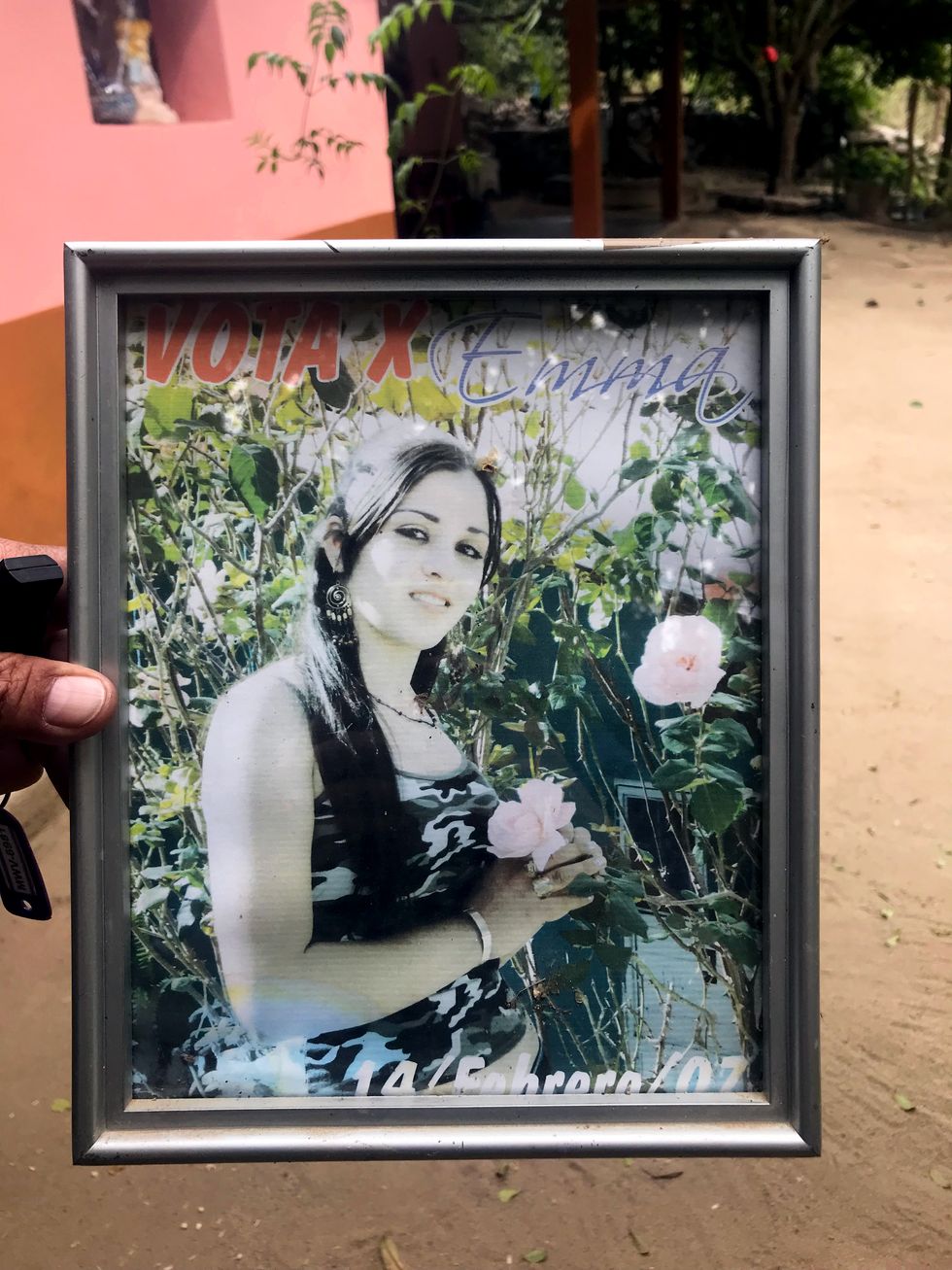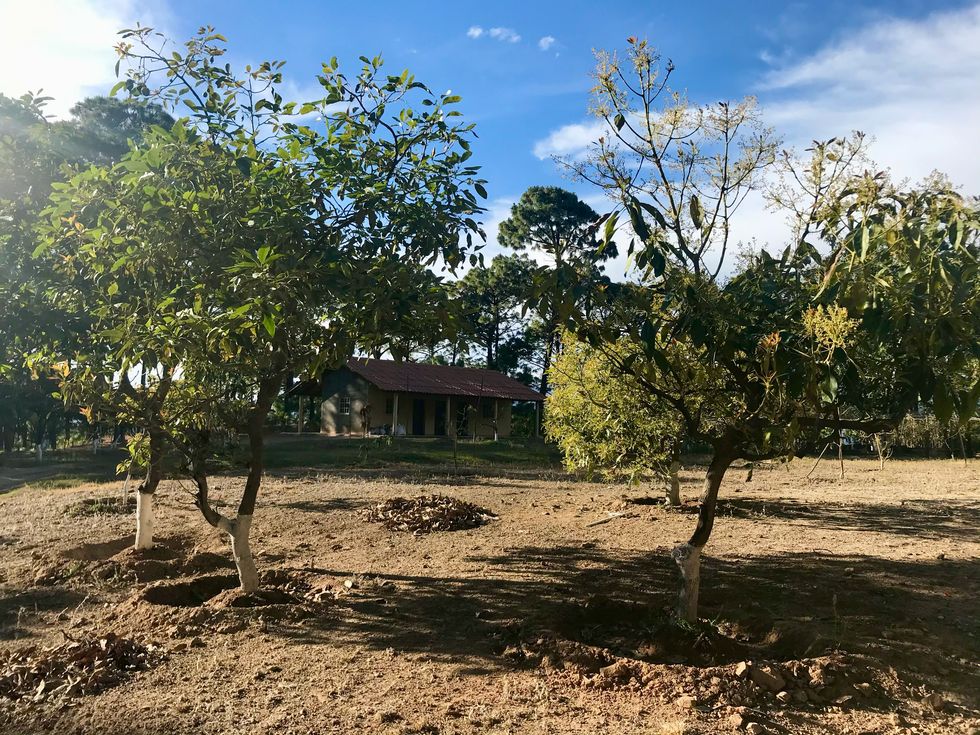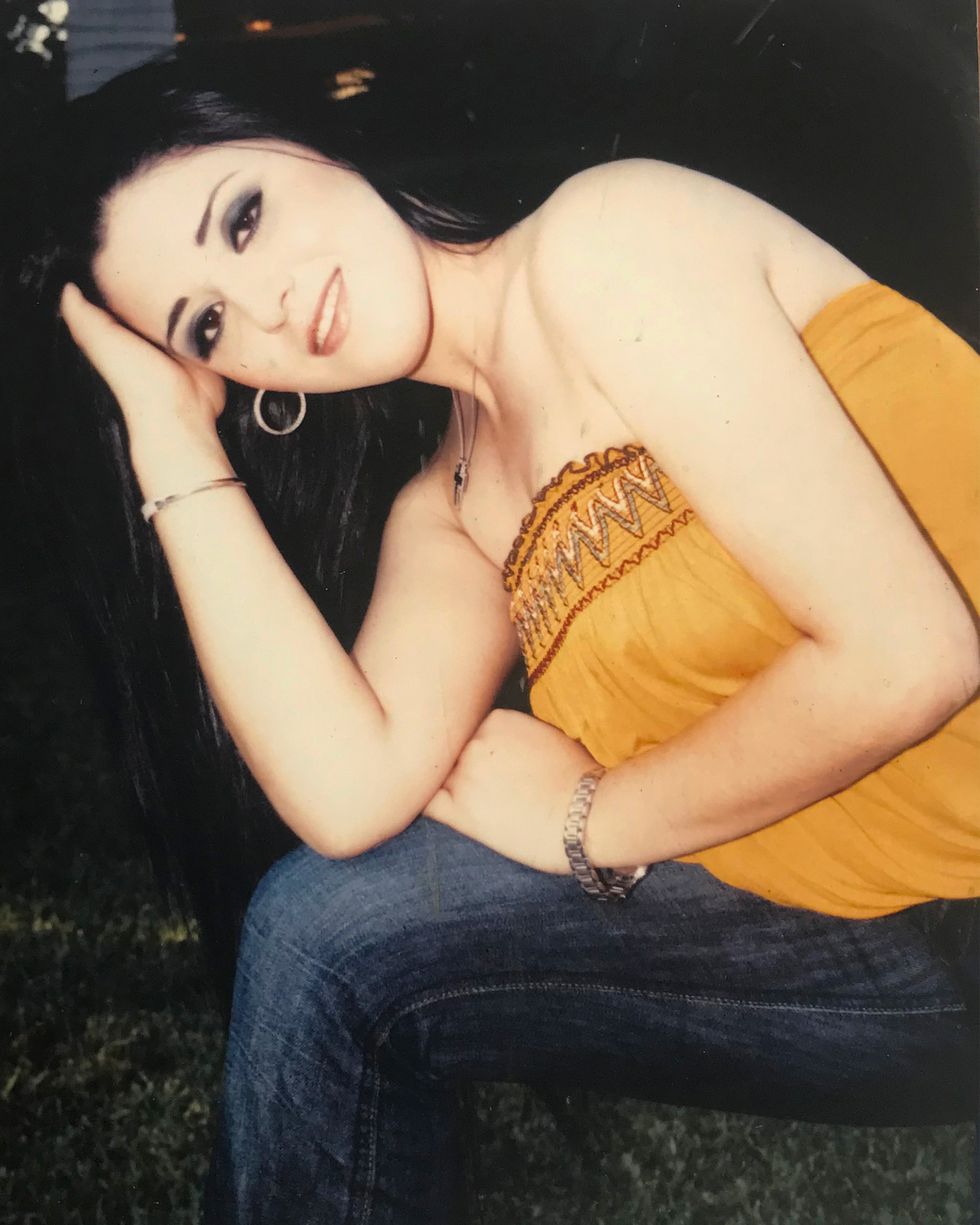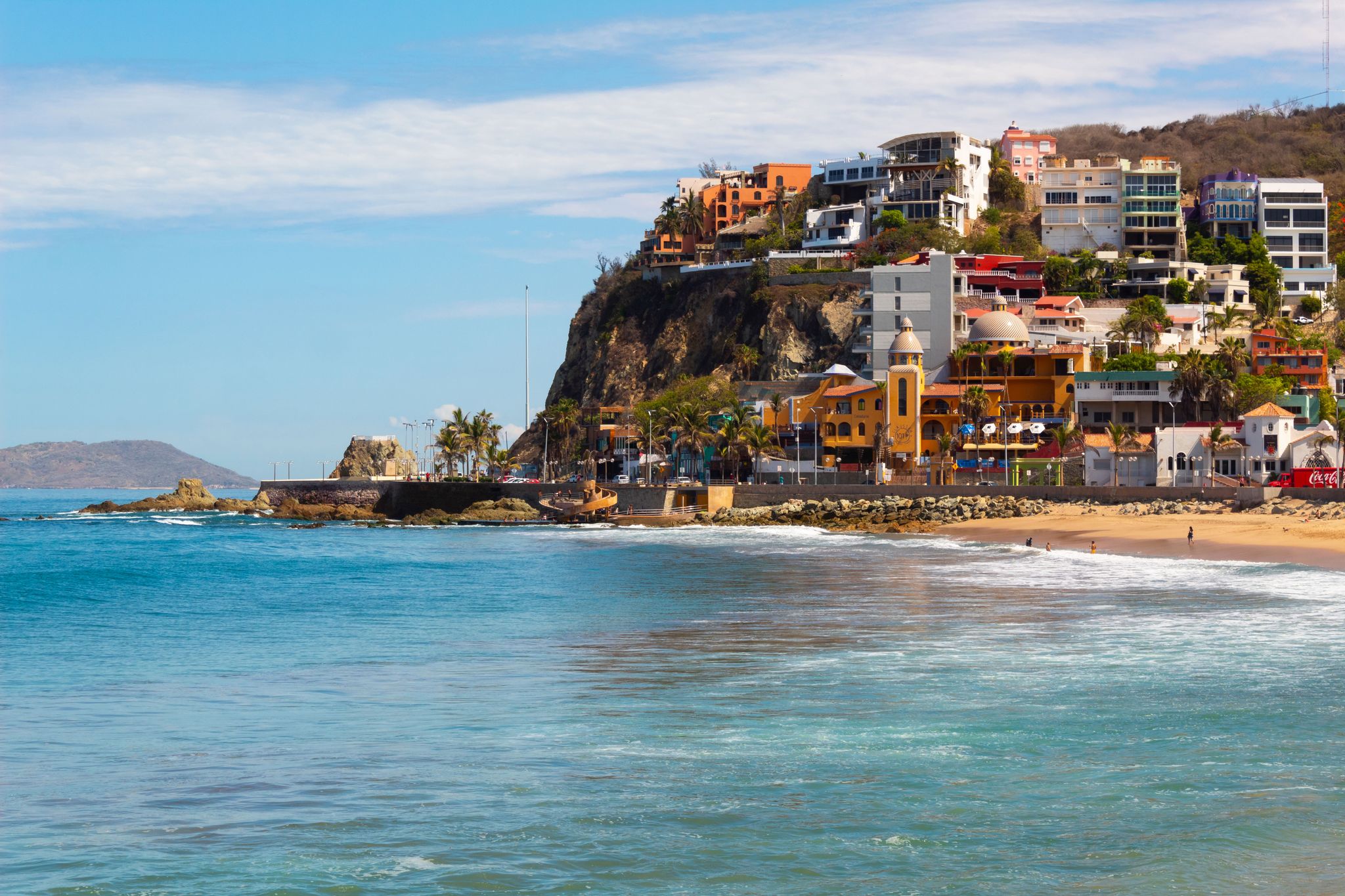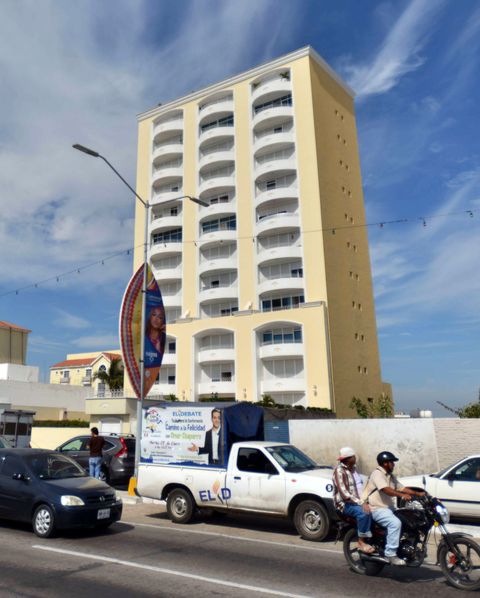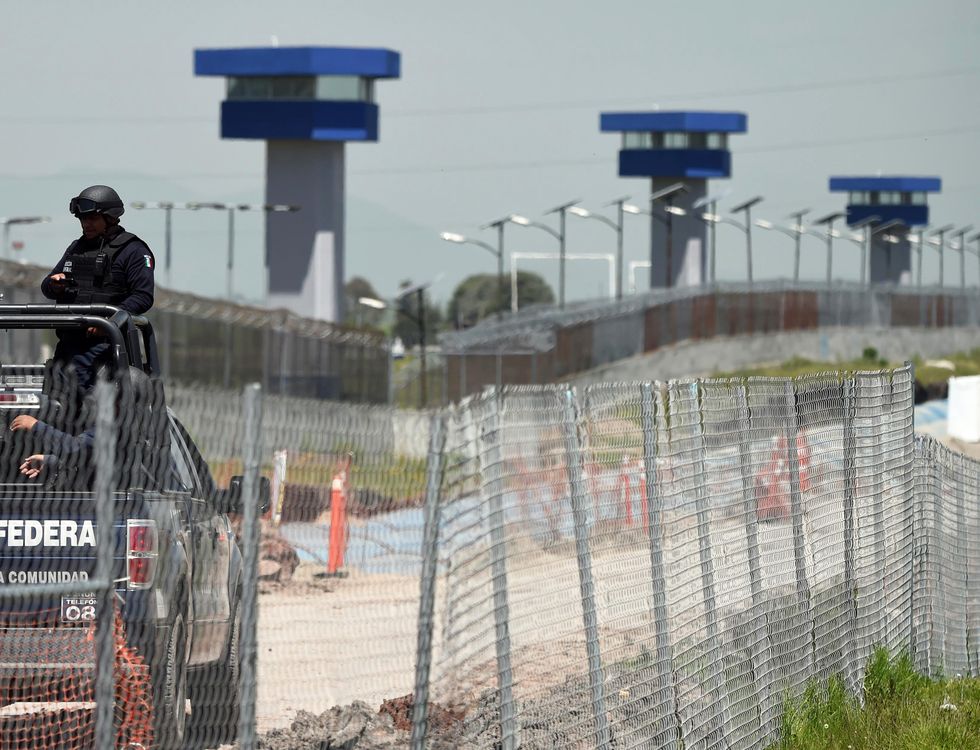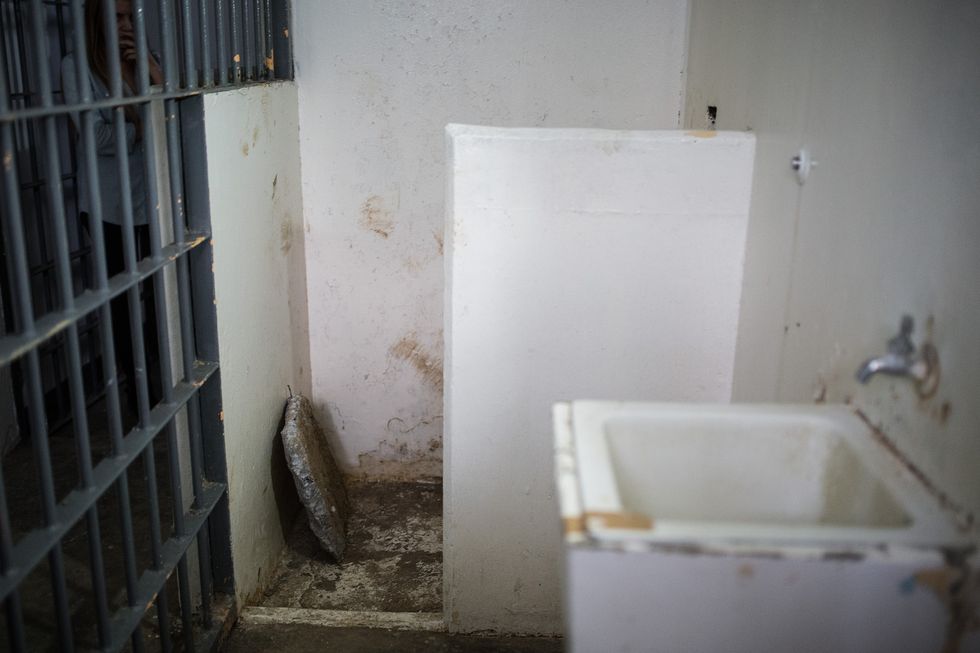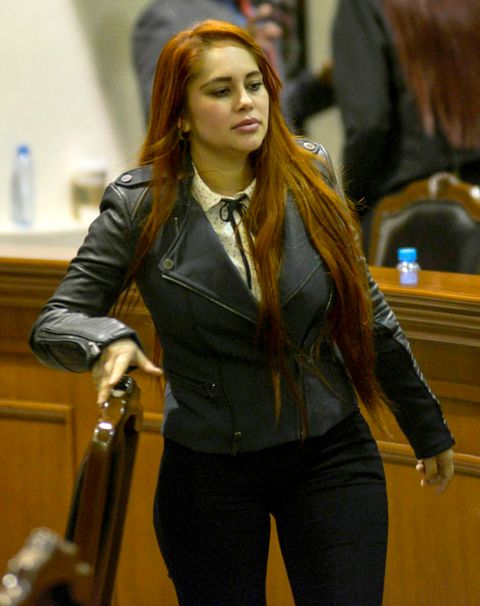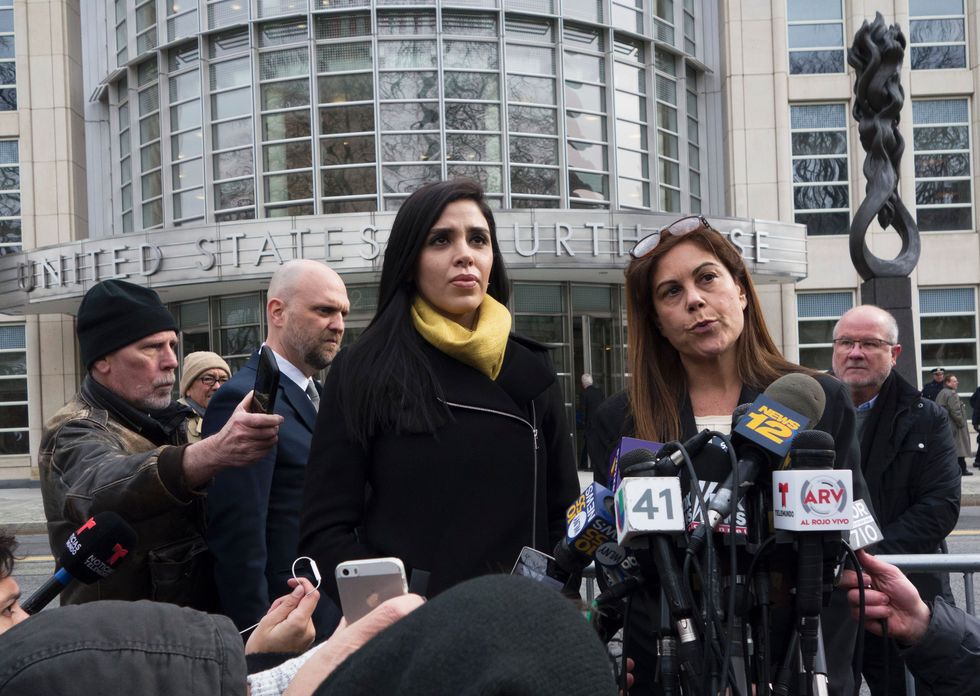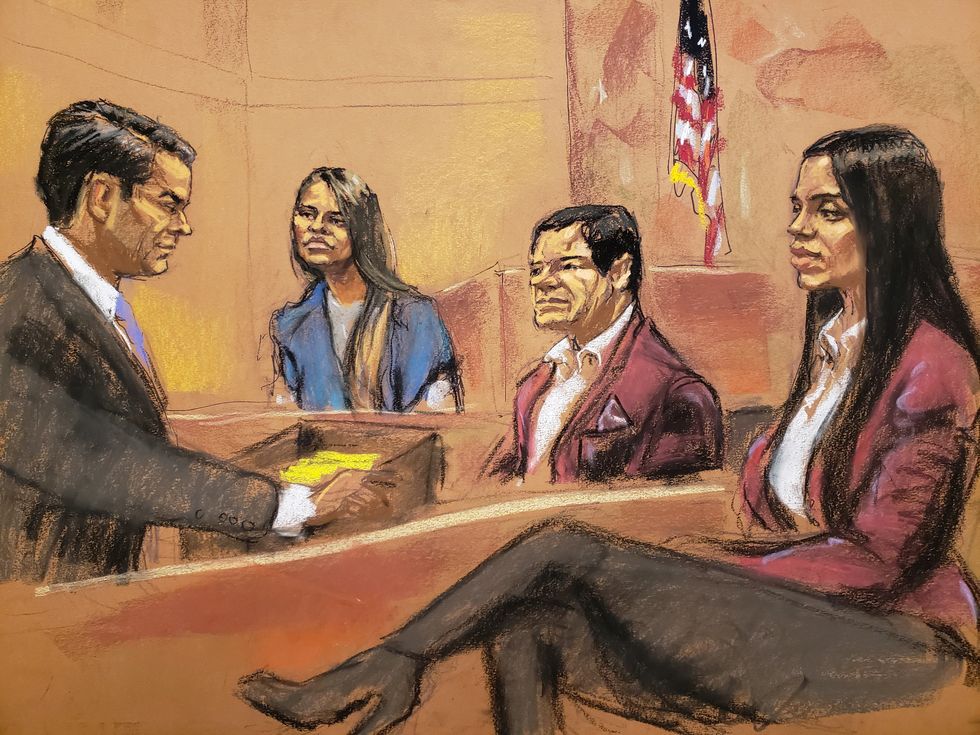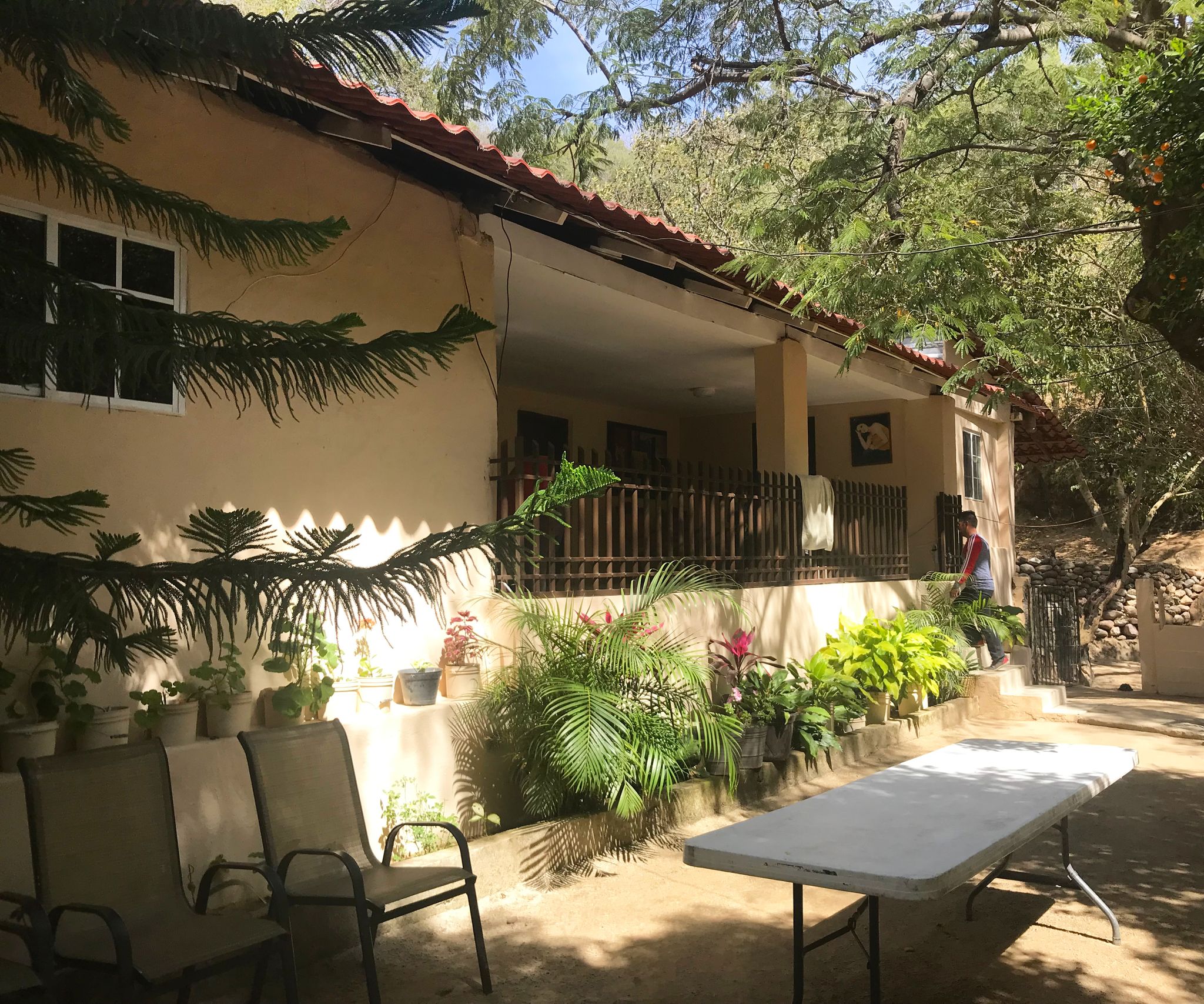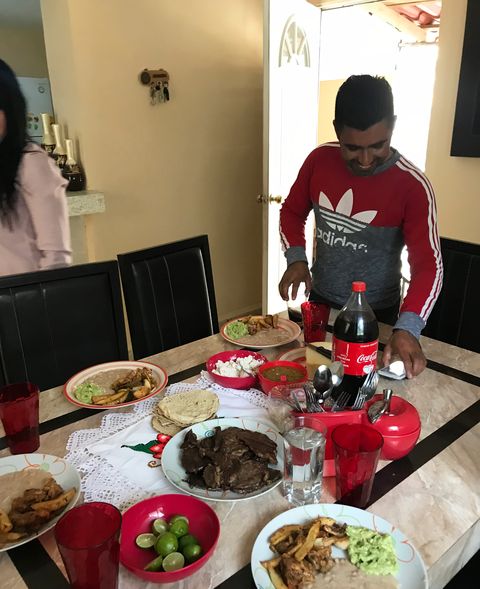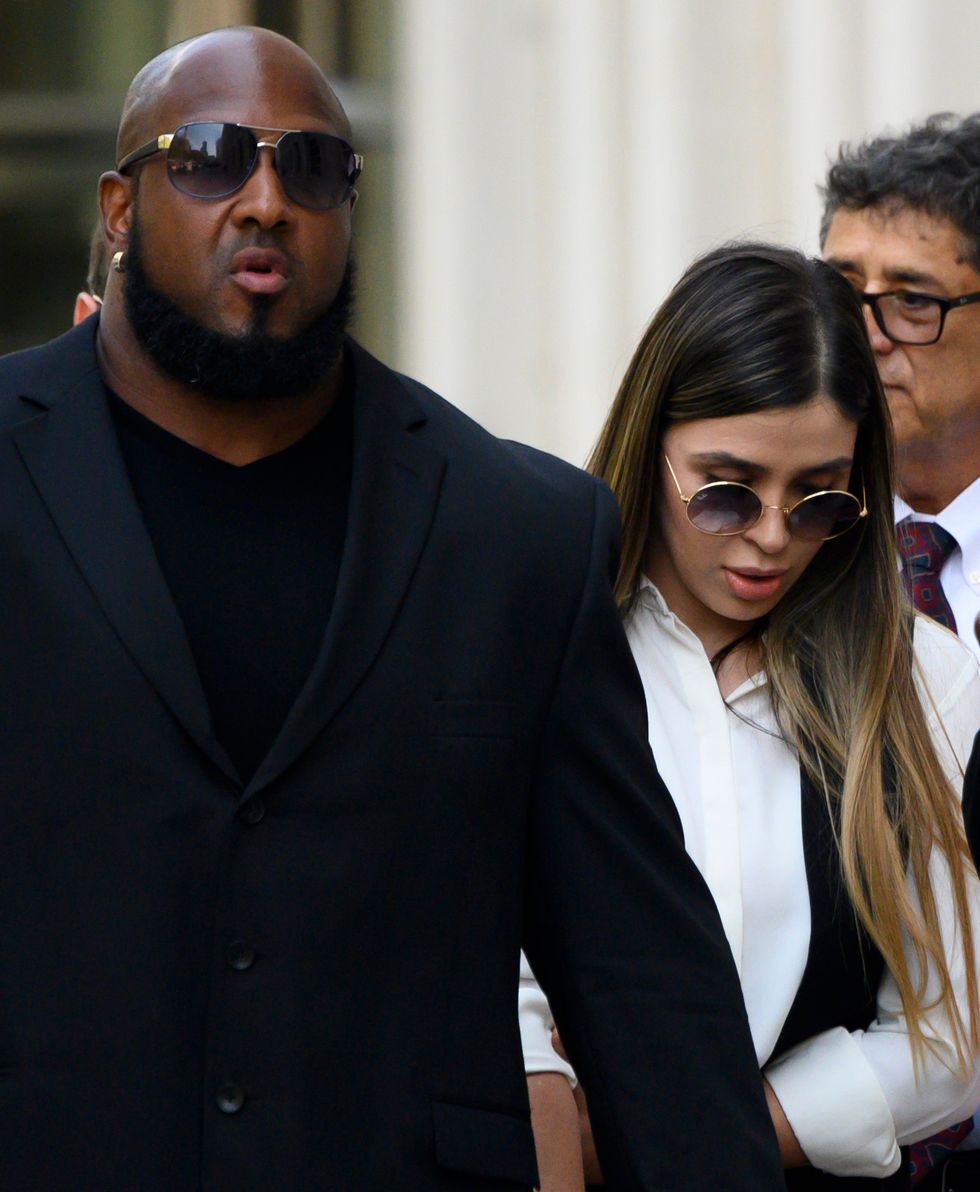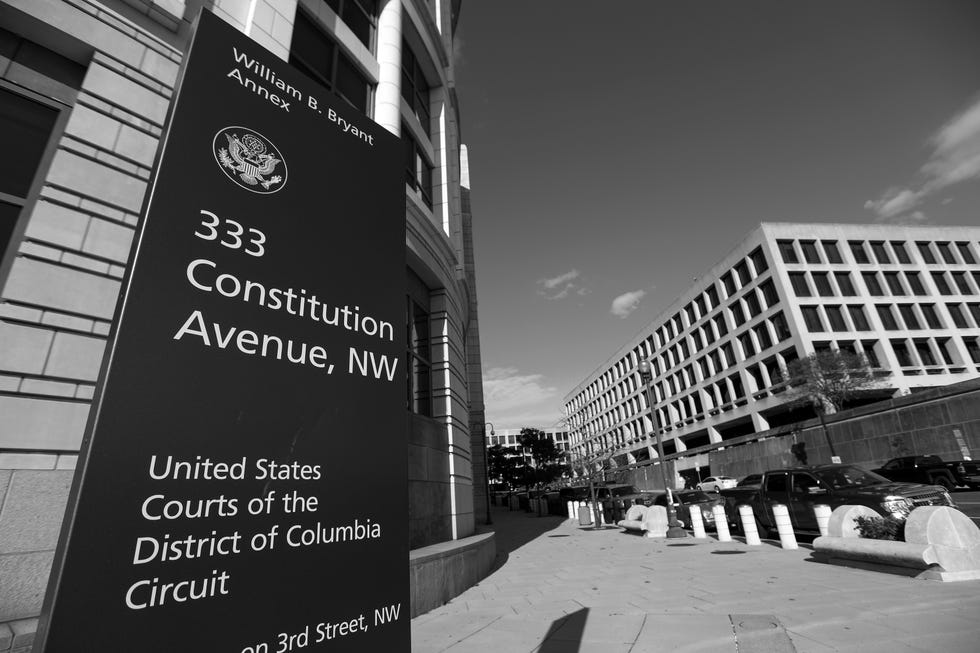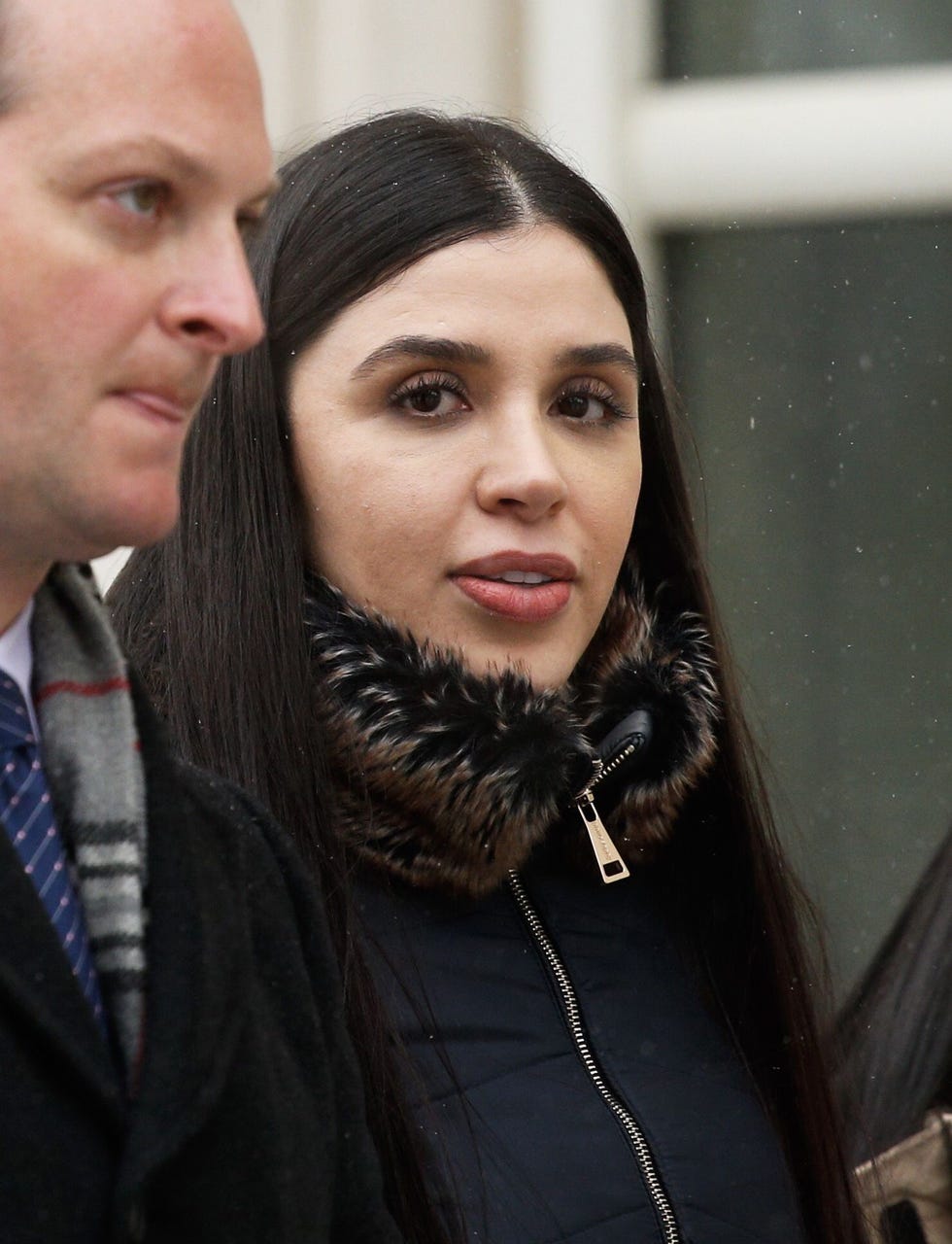Life as El Chapo’s Wife
Emma Coronel Aispuro looked straight into the camera as the sheriff’s deputy booked her into the Alexandria Sheriff’s Office in Virginia: shadows pooling across her full lips, dark circles ringing her eyes, and her dark hair, parted at the center, falling over her denim blue and green prison shirt. In the mug shot law enforcement dispatched to international media, announcing the capture of El Chapo’s wife, Emma looked as she felt: tired but resolute.
Her Feb. 22, 2021, arrest was an anniversary of sorts: foreshadowed seven years before on the exact same day when Mexican marines escorted her husband in handcuffs, after having apprehended him in a Mazatlán apartment where they were staying with their twin daughters. Within days of her own arrest, media rumors would swirl that the 31-year-old was cooperating with federal agents. As she sat in her cell, she’d worry about her family back home and what the future might hold for her. Because she had known this day would come. The present had finally caught up to the hypothetical: She, too, was going down for her husband’s crimes.
The Casanova Cantina in Culiacán, a city in northwestern Mexico where Emma had moved after marrying one of the world’s most notorious drug lords on her 18th birthday, was packed. Hundreds of young people danced to blaring reggaetón, and the drinks were flowing. Servers carried flaming trays shaped like life-size flamingos and gigantic American Express cards, delivering bottles of champagne and drinks in brightly colored glasses.
The cantina was known for attracting buchonas, women with surgically enhanced curves. Tonight, there were murmurs that a niece of Joaquín Guzmán Loera—El Chapo himself, imprisoned for life en el otro lado (in the United States)—was there ahorita mismo. This very moment! Julio César Chávez Jr., the famous Mexican boxer married to the widow of Chapo’s assassinated son, roamed the crowded room.
Nearby, young women were deep in discussion about a hot topic in Culiacán: the impending sentencing of Emma Coronel Aispuro, due in a few days in a courthouse in Washington, D.C. Emma was a celebrity here. El Chapo had plucked her from a beauty pageant some 14 years before, when she was just 17, selecting her as his wife. As the leader of one of the world’s most prolific drug cartels, he could do that. Now, with Emma facing punishment for helping her husband and the cartel, everyone had an opinion.
“Honestly, I don’t think it’s fair, because she isn’t directly involved,” Karla Castro said in Spanish of Emma’s incarceration. “We have to consider that she’s a mom, and, as his wife, remained silent about what her husband was doing.”
“I believe that more than anything, she did it for her kids,” added Iskra Burgueño, another patron of the club. She was referring to Emma traveling to the United States earlier that year, where she was almost guaranteed to be arrested.
The women shook their heads, wondering aloud whether the brazo largo (“long arm”) of the U.S. government was reaching too far into their country under the guise of protecting American citizens from deadly narcotics.
To some, Emma was a victim of the cartel who had no choice but to do what she was told, including breaking the law. To others, she was a victim of overzealous U.S. prosecutors eager to make an example of her, likely knowing she couldn’t cut a deal with the U.S. government without worrying about the worst kinds of consequences from the cartel if she ever returned to her homeland. And to others still, she wasn’t a victim at all, but rather a grown woman who made it rich through her looks and contribution to an international drug syndicate.
“Once you enter, how do you leave that world?” Castro said, first in Spanish, then in English. “It’s all she knows.”
“It’s very difficult to leave that,” Burgueño said. “So, I believe that more than anything, she—”
“She’s scared,” Castro interrupted.
“I think she’s afraid of losing her family more than anything,” Burgueño said, nodding.
After covering El Chapo’s trial for the New York Times, I traveled twice to Mexico, trying to make sense of his wife—and her life and marriage. Emma was arrested in February 2021 on drug trafficking charges, accused of passing communications between her husband and four of his sons to help her drug-lord husband escape from prison. She even knew of the plan to slip him a GPS device, with her youngest brother helping him escape through a tunnel. She chose to do these things. But considering she is a product of the machismo culture of the cartel, she arguably never had a choice.
And yet, she never claimed victimization. She came from a culture in which women can become the most tragic kind of victim: one who doesn’t know she’s being used at all.
Emma pleaded guilty to all three counts she was charged with, waiving her right to a trial, and was released from U.S. custody in Los Angeles County on September 13 of this year, after serving about two and a half years. (She will have four years of supervised release.) She did what she did willfully. But does a woman in her situation, married at 18 to a powerful killer three times her age, truly have a will to speak of?
Tucked into the folds of the Sierra Madre Occidental mountains and rimmed in verdant green foliage, the town of Canelas glowed honey-lemon in the winter sunlight. A few weeks before the annual festival known as La Feria del Café y la Guayaba, named for the region’s beloved coffee and guava, Emma, then a girl of 17, was campaigning against four other girls to be crowned that year’s reina—the queen of the festival in a town of about 800 people.
Emma’s was no ordinary family—her father, Inés Coronel Barreras, worked for the Sinaloa cartel, along with some other family members. Although the truth was that while her family was particularly enmeshed, in the area where she grew up, a cartel connection made them more ordinary than unusual.
Around 20 small planes and helicopters flew in guests for a Three Kings Day dance in honor of Emma’s candidacy. The winding, mountainous streets were crawling with horses, motorcycles, Hummers, and other expensive cars carrying la gente más importante—from prominent traffickers to local politicians, including a member of the Federal Police—into the small pueblo. One plane carried a man whose reputation and deadly reign as a leader of the Sinaloa cartel had made him one of the most wanted men in the world, and years later would prompt the U.S. State Department to offer a bounty of up to $5 million for his capture: Joaquín Guzmán Loera, better known as El Chapo. Another carried Ignacio “Nacho” Coronel Villareal, a powerful cartel leader who oversaw its meth business.
Emma was dating a local boy from the ranch—her first boyfriend. But she was “very serious, very centered, not much of a dating type,” her cousin, Alfonso López, who lived near Emma’s family for much of their childhood, recalled in a November 2021 WhatsApp interview from his jail cell in the neighboring state of Sinaloa, where he was serving a sentence for illegally importing military weapons.
Emma knew Chapo the way any teenager might “know” someone famous. She had first caught his eye when they were introduced at a local dance in 2006, and she was aware of his wealth, his flashy, abundant lifestyle, his notoriety among drug lords. (Emma was 11 the first time he broke out of jail, in a laundry cart from one of Mexico’s most secure prisons.) Chapo was also a homeland hero, running a cartel many felt better supported the people and their public safety than the government itself. This was especially true in a town like Canelas, where girls and their families were often anxious for them to marry into financial security and safety.
Chapo—who, according to allegations that he raped girls as young as 13 and called young girls his “vitamins” because they gave him “life”—wanted Emma. As the Three Kings Day dance got underway, he ordered the band to sing one of his favorite songs, “Cruzando Cerros y Arroyos” (“Crossing Hills and Streams”). “You are a flower and you are beautiful,” the singers crooned. “You are a perfumed rose and you were born for me.” When they finished, Chapo ordered it sung again. And again.
He and Emma talked for half an hour. Before leaving, Chapo gave Emma’s father a Chevy Cheyenne 4×4 and a Mercedes-Benz topped with a huge bow for Emma. In the mountains, where it’s still customary for families to be paid for their daughter’s hand, a kind of reverse dowry, Emma was now—quite suddenly—the drug lord’s intended wife.
Two days later, 150 members of the 72nd Infantry Battalion descended on the area, searching for Chapo, having received intelligence that he was nearby. According to a local paper, over the next several weeks they stood guard over two airstrips and set up checkpoints on the road in between. But the battalion left just days before the feria—in time for Chapo to wend his way back to Canelas, and to Emma’s side.
A community newspaper article noted that Emma had enjoyed a “great morbid popularity” in the days leading up to the Valentine’s Day election for queen. The competition was steep, Alfonso recalled. Acknowledging the other “very pretty candidates,” he said he suspected Chapo paid people off to vote for her.
Among the honored guests on the day of the election was Chapo, who hired three bands to serenade Emma. Each opened with the same song, one after the other. “Señor Chapo paid a lot of money to make it a grand event,” Alfonso said. That feria was far grander, he believes, than any before or since.
Emma won the competition with exactly half of the 800 votes and was later crowned queen in a silky yellow dress, her hair in ringlets, her kohled eyes wide.
On July 2—her 18th birthday—she was married to Chapo, in what she described as a simple ceremony at her childhood home, surrounded by family and close friends, chickens clucking in the background. Emma wore a diamond-encrusted wedding dress, Chapo a black suit. For the next three days, bands and parties filled the streets of Canelas, ringed by la guardia, uniformed cartel members carrying automatic weapons.
The newlyweds escaped to the hill town of El Carrizo and a simple one-story wedding home: yellow with a terra-cotta roof, slender columns reaching up to wooden planks, a bare bulb hanging from the ceiling. Inside, Chapo and his teen bride waited out the authorities. Through the window there was a panoramic view of Canelas and the surrounding towns tumbled along the lonesome horizon. Alone with one of the most wanted men in the world, Emma was very much his—and only his.
After the wedding, Chapo moved Emma to a home in Culiacán, the cartel headquarters, population then around 630,000. She had grown up in a place even smaller than Canelas—La Angostura, with just a few dozen inhabitants—in the northwest state of Durango. Culiacán was a shock.
Emma was often alone while Chapo helped run the cartel—and, it was widely known, he was often with other women. She was just one in a never-ending conveyor belt of beautiful girls, with marriages that seemingly ran one into the next without the punctuation or officiality of divorce. Another of Chapo’s wives, Griselda López Pérez—who was nearly three times Emma’s age—still lived in Culiacán.
In those early years of her marriage, Emma began to change. Not in her demeanor, repeatedly described by family and residents of northwestern Mexico as simple and nice. But as her husband accumulated mistresses, the slight young girl shape-shifted into the full-bodied, tightly clad woman of her husband’s desires.
Every time her cousin saw her, she was more transformed. Cosmetic surgeries are typical in the region, with women often remolding their faces and enlarging their breasts and butts.
Then, when she was 21, Emma’s body changed in an entirely different way: She became pregnant. With twin girls.
As Chapo’s wife, Emma always felt safe. Untouchable. But her marriage to him assured protection only so long as he was still alive, a matter of whim in the narco world of shifting power dynamics. With Chapo still in power, she felt she and their children would be safe from the violence of the drug world. But if and, inevitably, when something happened to him, she feared she would be left unprotected. Emma wanted to give her future children at least a chance at some measure of lifelong safety.
Emma was born near San Francisco, a dual American and Mexican citizen, with all the benefits and privileges American citizenship carried. And so, according to a 2011 Los Angeles Times article, nearing her due date and without her husband, Emma crossed the border into Southern California in July of that year, U.S. federal agents reportedly tracking her every move. Around a month later, she gave birth to daughters, born one minute apart at Antelope Valley Hospital in Los Angeles County: American citizens. Following her husband’s strict instructions, on their birth certificates Emma left blank the space for their father’s name, bestowing on them instead her own last name.
But she preserved their full parentage in their first names: Emali and Maria Joaquína. One for each parent.
It was a lonely time. “Are you going to chat with me all day long or will you be busy?” Emma texted her husband just months after giving birth and preparing for a postpartum surgery. When the twins were six months old, Chapo narrowly escaped capture at a mansion in Los Cabos, Mexico. He and his secretary had escaped over a fence, cutting themselves on some nearby shrubbery. He told his wife about the arrests of two associates, but left out the third arrest of another mistress, Agustina Cabanillas Acosta. “A bit scratched up but fine, thank God,” he texted Emma—relaying a similar message to another mistress, Lucero Guadalupe Sánchez López, who would later win a seat in the local legislature.
In Mazatlán, Sinaloa, the entrance to the Miramar, a lemon-yellow seaside apartment complex, was guarded by a single employee. Above him were 11 stories, the balcony of each apartment etched with a single eye, eerily glinting at the soft, rolling waves of the Pacific.
Chapo, wearing sunglasses and slumped in a wheelchair—and just out of view of video cameras—wheeled through the residence in the darkness. Soon after, Emma slipped by the infinity pool and up to the fourth floor. Her twins and several attendants, whom a maintenance worker later told me had lived in the building without the parents on and off for months, were also in tow. Rounding a secluded corner by the staircase, she pushed open the paneled door of apartment 401 and joined her husband.
In the early morning hours, the couple jolted awake to the sound of Mexican and American law enforcement barreling through their front door and charging past the sleeping two-year-olds, guns drawn.
This moment, Emma had always known, was inevitable. Chapo grabbed a Bushmaster semiautomatic rifle from his bedside table, leapt into the bathroom, and crouched inside, according to Alan Feuer, author of El Jefe: The Stalking of Chapo Guzmán.
“Don’t kill him!” Emma screamed as law-enforcement authorities swarmed the couple’s bedroom. She glanced at the bathroom where her husband—her lifeline—was hiding.
“Please, don’t kill him!”
With his wife pleading from the bed and their daughters nearby, Chapo surrendered without fire. “Calm down, I’m here,” Emma recalled her husband saying in an interview with the L.A. Times. Emma knew—she had to know—in that moment that this was the beginning of the unraveling. Both her father and oldest brother had been arrested less than a year before. Many of the men in her life—the very men who had pulled her into this world—were leaving her.
Chapo was incarcerated at Altiplano, a maximum-security prison. At least two women visited him there: Emma and Lucero (by now an elected official, visiting the prison using a fake ID). Both women also met—separately—with Dámaso López Nuñez, a lieutenant in the Sinaloa cartel who had worked in the first prison Chapo escaped from when Emma was a child, and who was helping plan his boss’s second escape. Emma had meetings with López Nuñez and Chapo’s sons to disseminate Chapo’s orders as he masterminded the getaway, López Nuñez said later, including the plan to slip him a GPS device disguised as a food item, establishing the coordinates of the kingpin’s cell and the tunnel to be dug beneath it.
Chapo’s detainment was relatively short-lived. Just 504 days after his arrest, he dropped down a hole in his cell shower to a waiting makeshift motorcycle railcar, which he rode through a nearly mile-long tunnel dug under the prison to a warehouse. The escape plan had taken more than a year and approximately $1 million to execute.
Emma’s youngest brother, Édgar, a teenager, was allegedly waiting there in the tunnel to accompany his famous brother-in-law. Within hours, Chapo was taken to a clandestine airstrip, where he boarded a plane, and disappeared into the mountains. But he would spend that New Year’s Eve not with Emma but Lucero, celebrating the start of 2016 together.
Just eight days later, Chapo was captured yet again by Mexican authorities and extradited to New York, on six separate indictments filed in states across the country, including running a drug cartel and conspiring to push narcotics across the border. The charges carried a sentence greater even than his own life.
El Chapo escorted by Mexican military, January 2016.
Inside Brooklyn federal court on Jan. 17, 2019, a guest star took the stand: Lucero Guadalupe Sánchez López. Dressed in a drab blue prison uniform, the only female cooperating witness to testify against the drug kingpin, Lucero had pleaded guilty to her part in his narco-trafficking conspiracy just months prior.
For all the world to hear, she referred to Chapo as “my husband, Joaquín.” The prosecution asked her to detail a years-long romance with the drug lord, which had started in the early days of Emma’s pregnancy.
In a narco world in which power is measured in part by the number of girlfriends belonging to a capo, a loyal husband was more than Emma could have hoped for. But having his brazen infidelity internationally publicized must have felt humiliating.
Seated on a courtroom bench, separated by a divider from her husband, Emma, dressed in a black jacket over a white collared shirt, struggled to maintain her usual stoicism. Lucero spoke in Spanish, and Emma removed her translator headset, listening directly to the woman with whom she’d been sharing her husband.
The same age as Emma, with long, dark hair and almond eyes, Lucero, who grew up in a small Sinaloan town, had similar features and a similar background. But when she met Chapo at age 21, she was—unlike Emma—not burdened by the physical and emotional demands of pregnancy. Over two days of testimony that winter, Lucero detailed how she’d run Chapo’s money-laundering operations and overseen drug shipments secreted away on airplanes.
When Anthony Nardozzi, a prosecutor in El Chapo’s case, asked Lucero about the nature of her relationship to the kingpin, she answered: “Well, up until today I’m still confused, because I thought our relationship—we were romantically involved as partners.” Emma bit her thumb.
And in a 2018 televised interview on Telemundo, Emma wondered aloud whether the media “think I’m not human or something,” given the way she felt the media objectified her. “I’m made of meat and bones.”
The day after Lucero began testifying, Emma took steps to more permanently secure her place in her husband’s narrative. She had a company registered: El Chapo Guzman JGL, LLC, the rights of which were placed in her name to start a clothing line.
When Emma returned to court for Lucero’s remaining testimony the following week, she and her husband dramatically appeared wearing matching maroon velvet jackets. Lucero, who’d broken down in guttural sobs while testifying, concluded her time on the stand facing a twinning couple.
When Lucero finished, Emma paid an artist more than $1,600 for an exclusively drawn pastel rendering of her and her husband in their matching jackets. Per her explicit instructions, the other woman, in prison garb, was not included.
Pulling off the mountain road, the SUV slashed down a dusty embankment to a white stone-filled creek and into the secluded town of La Angostura. Farther in, past a grove of grapefruit and lemon trees and tucked under the boughs of a towering orange tree, sat a pale yellow, one-story home roofed in terra-cotta.
The car pulled to a stop. A man with a gray mustache, white sombrero, and purple-trimmed hoodie slid from the passenger’s side, a puff of sandy dirt clouding his black loafers. This was Victorio Aredo Coronel, a nephew of Emma’s father. Victorio’s son, Gerardo Raudel Hernández Carrasco, popped out the back.
On the front porch, several children watched a flat-screen television, the din of a soccer game punctuated by the crowing shrieks of roosters waddling about the front yard.
Claudia Coronel, in her mid-twenties with a soft voice and long, dark hair, emerged from the house to greet her relatives. A long-ago portrait of her elder sister, Emma, smiled down at them from the porch: dark hooded eyes and plucked brows, with Emma wearing jeans and a mustard tube top, a cross necklace dangling from her neck.
I’d talked to Emma about going to her childhood home even before her husband’s trial ended. While everyone else in court studied her husband’s every move, I watched Emma, a woman about my age and yet so different. I wanted to better understand her life before her husband.
No one will hurt you here: You’re safe, I was told when I arrived in Canelas. About 200 masked men with assault rifles ringed the town’s perimeter—la guardia, serving as guards for the annual coffee and guava festival.
Now, outside Emma’s childhood home, where she’d lived until her marriage, Claudia greeted me with a kiss on the cheek: “I follow you on Instagram,” she said, smiling.
Blanca Estela Aispuro Aispuro—mother to four, including Emma and Claudia—stayed in the kitchen, preparing lunch.
The family gathered in a room adjoining the kitchen, a tower of warm flour tortillas mounting through lunch, the fresh piled atop the cooling on an embroidered place mat. Passing a platter of fried bistec and spooning crumbly cotija cheese onto their plates, Emma’s family exchanged news from the recent feria and the crowning of this year’s queen.
Blanca asked about the festival’s official reina: Was she pretty?
From the other side of the table, Victorio nodded emphatically: Of course! The queen is always pretty, he said.
Gerardo hurried past photographs on his phone, stopping on one of the contestants in an aqua dress, gold-lettered sash, and soaring rhinestone tiara.
Blanca hunched over the phone, considering. Then, after a while: “My queen is prettier,” she said with a teasing smile.
With Chapo’s lifelong incarceration all but certain, Emma, for the first time as an adult, had to think about what her family’s life would look like without him. She made a guest appearance on VH1’s Cartel Crew in November 2019. She created an Instagram account, @therealemmacoronel. On it, she rarely mentioned her husband, instead documenting her own exploration of New York. She also continued experimenting with her hair: golden highlights for Mother’s Day 2020 and on her 31st birthday. By December, she had gone bleached blonde. Her hairstylist said later in an interview at his salon in Culiacán that Emma wanted to “cambiar el look”—change her look. She even posed in a fashion campaign for his salon, wearing a white lace wedding dress, rhinestones scattered down the pleats, a floral hair clip tucked into her long blonde locks.
In February 2021, just a few months later, she returned to the salon one last time, had her hair dyed back to its original color, and boarded a plane to Virginia for what one of her lawyers called a business trip.
She was arrested at the airport.
Emma was charged with participating in a conspiracy led by her husband to import cocaine, methamphetamine, heroin, and marijuana into the United States. The complaint against Emma also noted that she had aided and abetted his now-infamous break from the high-security prison in Mexico via the tunnel—likely a crime in Mexico, but not among the charges she faced in the U.S.
The conspiracy charge—a legal maneuver that can snag mobsters not easily caught in actual trafficking deals without requiring that they commit the offense themselves—is a wonderfully complicated legal construction. In Emma’s case, conspiring to import drugs was as inconsequential as passing text messages between her husband and father without ever actually touching drugs themselves. In open court, even the main prosecutor on her case called her a mere “cog in a very large wheel of a powerful criminal organization” whose “primary significance on a criminal level” was her “proximity” to her husband.
For the next 14 days, Emma was kept under strict COVID-19 protocols in a quarantine unit. When her period started shortly after her arrest, guards provided her with only two sanitary napkins for the next four days. She went just as long without a shower, the word becoming one of the first she learned in English, spelled out letter by letter by her Spanish-speaking lawyer so that Emma could repeat the request to guards in the hope of eventually getting one. In March of that same year, Emma was moved to solitary confinement.
Snow flurries flitted against a slate-colored sky in Washington, DC. Inside a district courthouse on Constitution Avenue, a bomb-detection dog sniffed the courtroom. “Everything’s good,” the guard declared. Just after noon, flanked by U.S. marshals, Emma, who had been in U.S. custody for nine months, strode in, dressed in a fitted gold-buttoned black pantsuit and heels.
Appearing solemn behind her black mask, Emma took a seat at a table split by pandemic partitions and swiveled to face Judge Rudolph Contreras. When the judge invited her to speak, Emma adjusted the podium microphone and glanced at her approximately three-and-a-half-minute speech. “I know that you may find it difficult to ignore the fact that I am the wife of Joaquín Guzmán,” she said in Spanish, her voice softly strained. “And for perhaps—”
The translator cut her off. Emma sighed and paused, continuing after her words were put into English for the judge: “For this reason, you feel that there is a need for you to be harder on me. But I pray that you not do that.” She told the judge that her daughters, then 10 years old, were “the most important reason why I’m here before you,” adding she hoped to lead by example in encouraging them to own their mistakes: “I accept the mistakes that I have made and I am sorry for them.”
Her voice cracked as she noted the pain she had put her family through. Her daughters might never have their father, she said, but “I beg you, please do not allow them to grow up without the presence of their mother.”
Acknowledging the government’s higher sentencing guidelines for the crimes she committed, Judge Contreras, instead, described Emma’s involvement in Chapo’s operation as paling in comparison to that of other Sinaloa cartel members who had passed through his court, and sentenced her to three years behind bars with time served, and the forfeiture of $1.5 million. “Good luck to you,” he said. “I hope that you raise your twins in a different environment than the one that you’ve experienced.”
Fulfilling her sentence in a federal prison in Texas, Emma was transferred to Los Angeles County over the summer and then released. She’s 34—half a lifetime since first meeting El Chapo at that dance, when she caught the eye of a killer and the whole course of her life seemed preordained.
Returning to her family in Mexico is almost out of the question. In a life with few choices, it turned out she may have made one that would ultimately matter most: seemingly turning a prison sentence into an escape route.
And as Emma walked out of the courtroom on the afternoon of her sentencing, the end of one life promising the start of another, she turned briefly back to her supporters sitting in the audience—and winked.
“I hope for many good and beautiful things in my life,” Emma would tell me later in her only interview since getting out of prison. She was feeling excited to be with her daughters again, and enjoying “quality moments,” like when her family cooked steak for her upon her release. She said she was focused on her career plans, which are still evolving. “I still can’t say the plans, because then later they won’t come to be,” she added with a laugh. “But many and beautiful.”
Credits: Emma Coronel Aispuro; lead image: Todd Heisler/Redux.
Emily Palmer is an investigative reporter, covering courts and crime. Her work has frequently appeared in The New York Times and Cosmopolitan, and her reporting has been featured on 20/20, Nightline, Max and Hulu. She joined People as a Senior Crime Writer in 2023.

